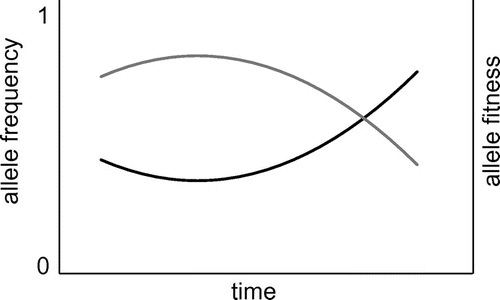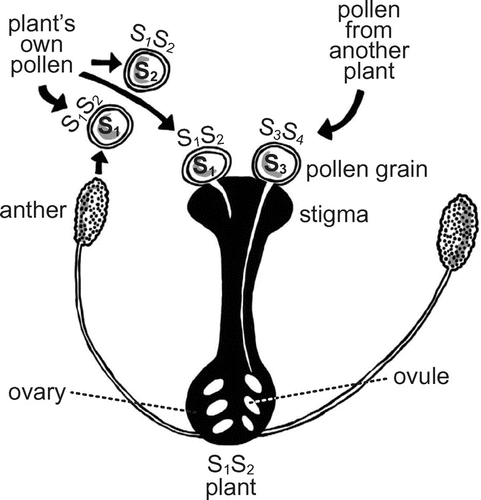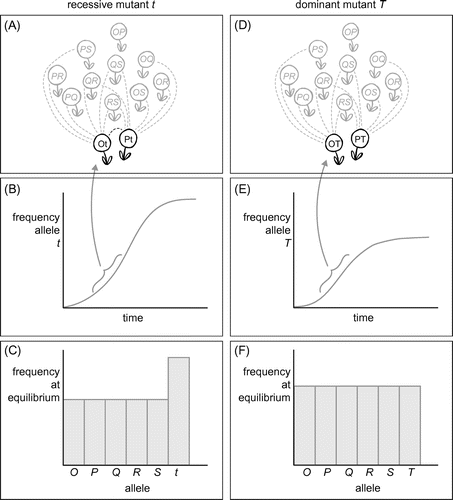Figures & data
Figure 1. Illustration of negative frequency-dependent selection leading to protected polymorphism.

Figure 2. Schematic view of Sporophytic Self Incompatibility (SSI) in plants.

Table 1. Learning goals and starting questions of game with regard to negative frequency-dependent selection.
Figure 3. Explanation of why recessive alleles reach a higher frequency at equilibrium than dominant alleles in SSI plants. Panels A–C show the dynamics of a newly evolved recessive allele, panels D–F that of a new dominant one. Top panels (A, D: focal plants black, rest of population grey) depict the critical time phase when a new allele has increased and is found in several heterozygotes. Dashed lines indicate potential fertilisation partners. Panel D shows that heterozygotes carrying a new dominant allele already begin to miss out on non-self crosses, while this is not yet the case for the recessive mutant (black dotted line in panel A). Middle panels (B, E) show the frequency increase of the mutant alleles through time. The exponential increase ends sooner for the dominant (E) than for the recessive allele (B). Bottom panels give equilibrium frequency distributions: dominant alleles will have lower frequencies at equilibrium than recessive alleles.

